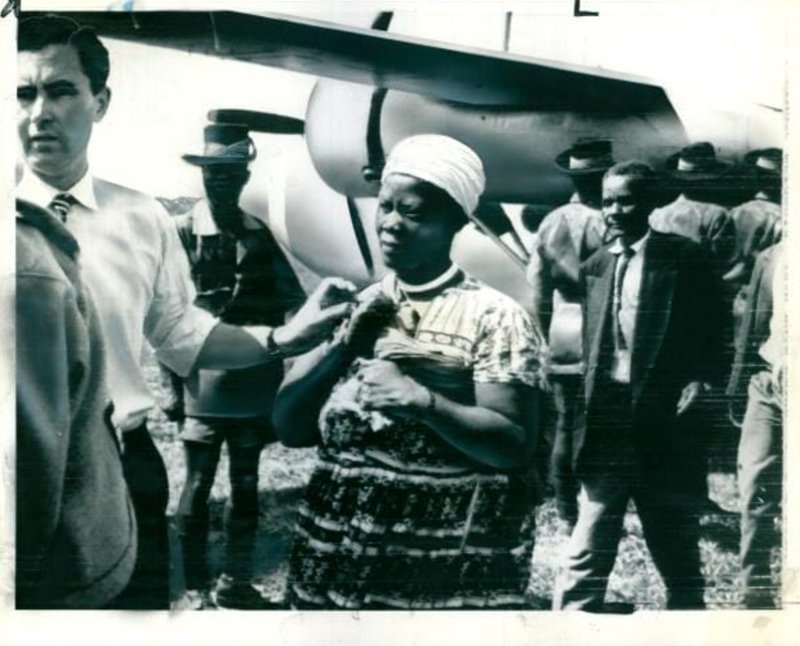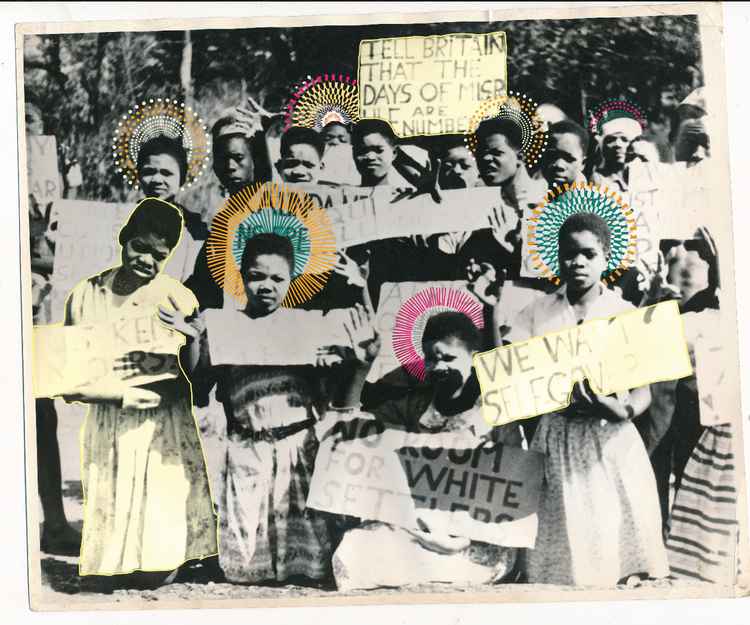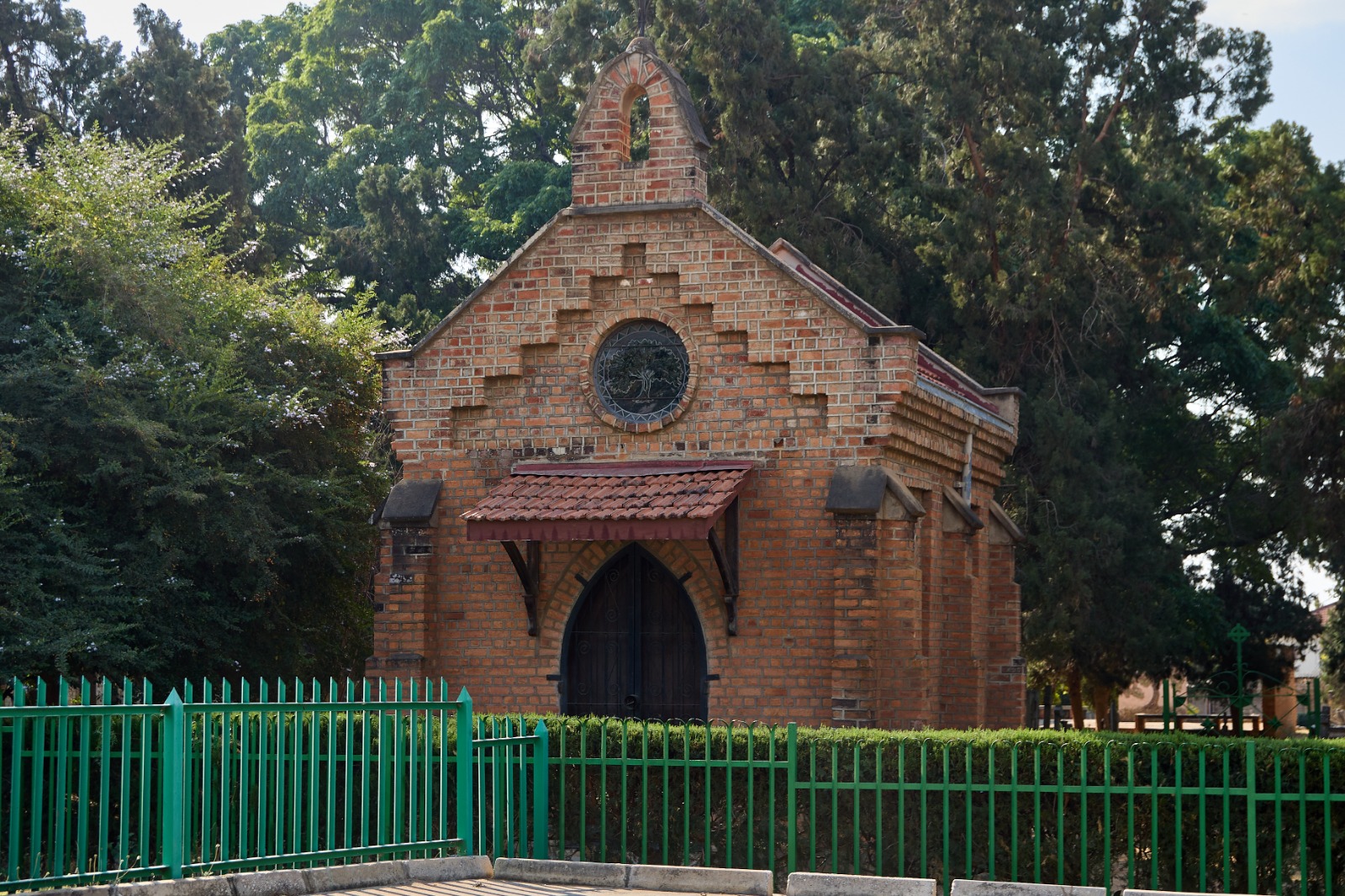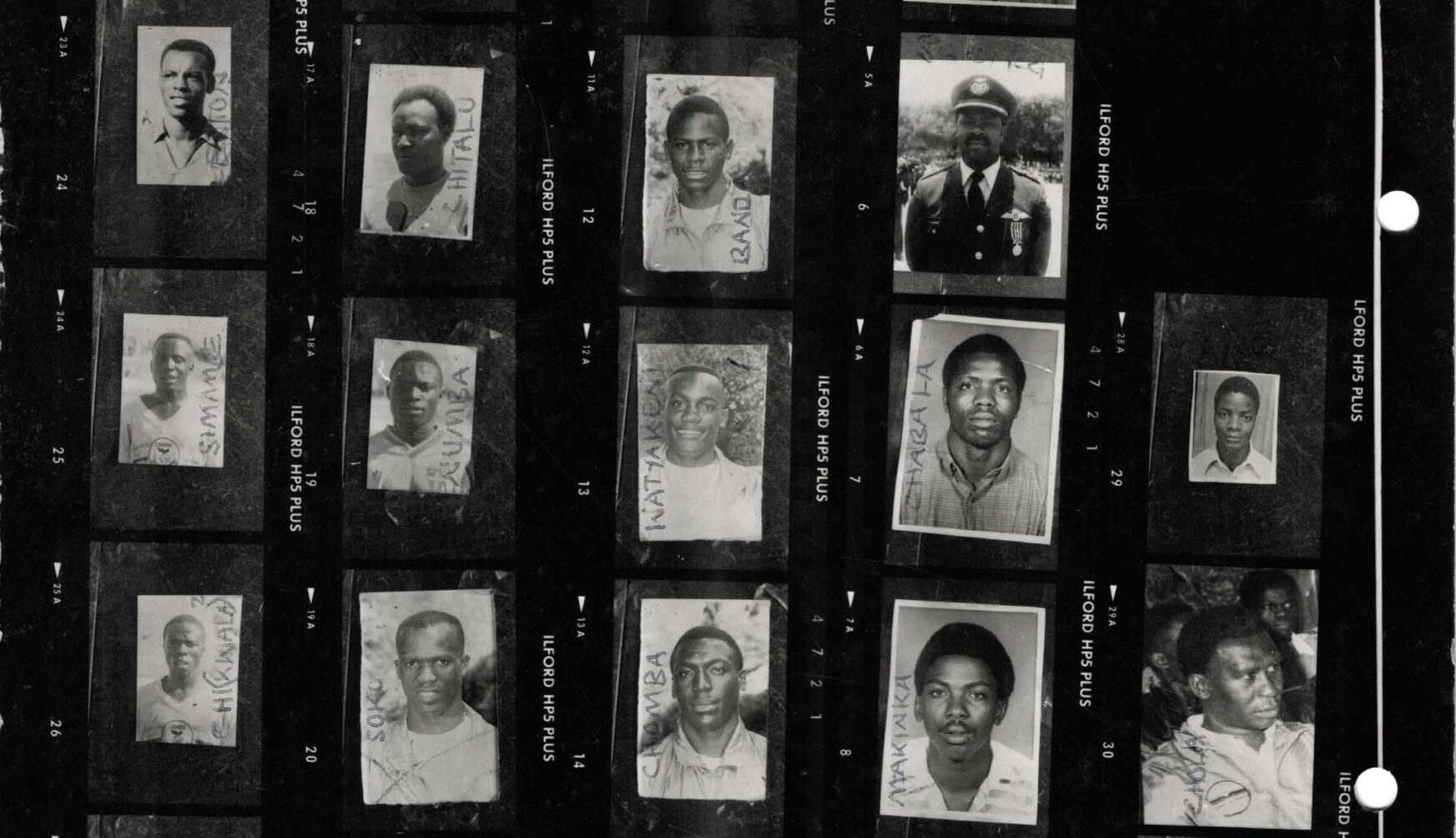She is a hero to some and a villain to others. Some branded her a crazy cult leader, and others saw her as a revolutionary church leader. In 1953, an illness caused Chinsali native Alice Lenshina to go into a coma, and when she woke up, she claimed to have divine visions. What Alice Lenshina would go on to preach based on her visions and the movement she would form significantly influenced Zambia's religious and political landscape during the late colonial period and early years of independence. Lenshina's leadership and the church's rapid growth had far-reaching impacts, making her one of the most mysterious, complex, and controversial figures in Zambian history.

Early Life and Rise to Prominence
Lenshina was born in the early 1920s and grew up in northern Zambia. Her family was part of the esteemed crocodile clan. The name Lenshina is a Bemba adaptation of Regina, which means queen.
Lenshina was a member of the Church of Scotland until she fell severely ill with cerebral malaria and fell into a coma in 1953. When she regained consciousness, Lenshina claimed that she had met Jesus Christ and was tasked with spreading his word. She preached a brand of Christianity that only required followers to be baptised. Lenshina was against witchcraft, polygamy, and alcohol. The movement began by Lenshina eventually evolved into what became known as the Lumpa Church in 1955.
Lenshina's charismatic leadership attracted a large following, especially among the Bemba people in Zambia (Northern Rhodesia at the time).
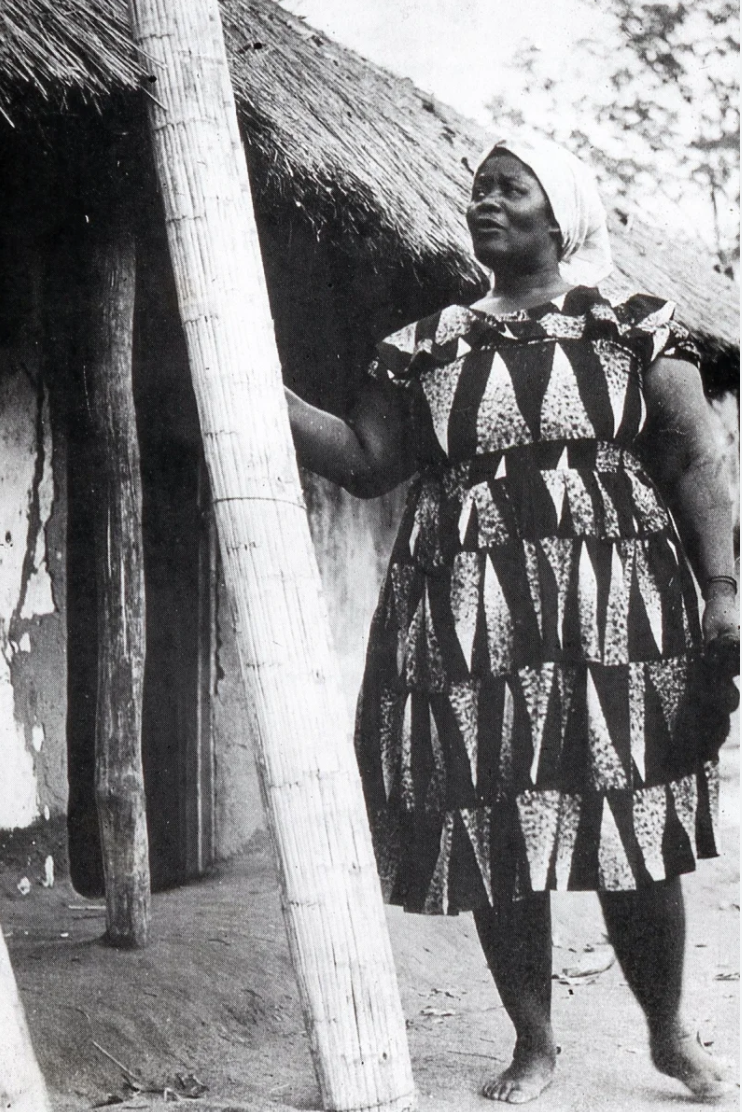
Impact and Growth of the Lumpa Church
The Lumpa Church's message resonated with many Zambians who were disillusioned with colonial rule and traditional religious practices. For the matrilineal Bemba ethnic group, unlike colonial authorities, female leadership was the norm. By 1958, the church reportedly had 150,000 adherents at its peak. The rapid growth of the Lumpa Church alarmed both colonial authorities and traditional leaders, who viewed Lenshina's influence as a threat to their power.
Relations with Colonial Authorities and Kenneth Kaunda's Government
Lenshina's movement initially faced opposition from colonial authorities, who were wary of any mass movements that could destabilise their control. However, the Lumpa Church's stance against witchcraft and traditional customs also aligned with some colonial objectives of "civilising" the African populace. This uneasy relationship changed dramatically after Zambia's independence in 1964.
Kenneth Kaunda, Zambia's first president, initially tolerated the Lumpa Church. However, tensions quickly escalated as the church's growing autonomy and refusal to integrate into Kaunda's United National Independence Party (UNIP) became apparent. The Lumpa Church's establishment of self-sufficient communities and its rejection of government authority led to violent clashes between church members and the government.
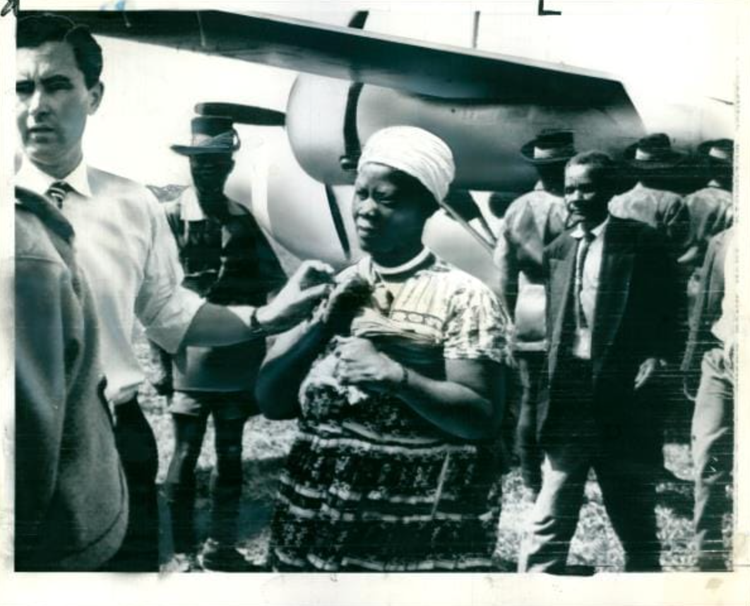
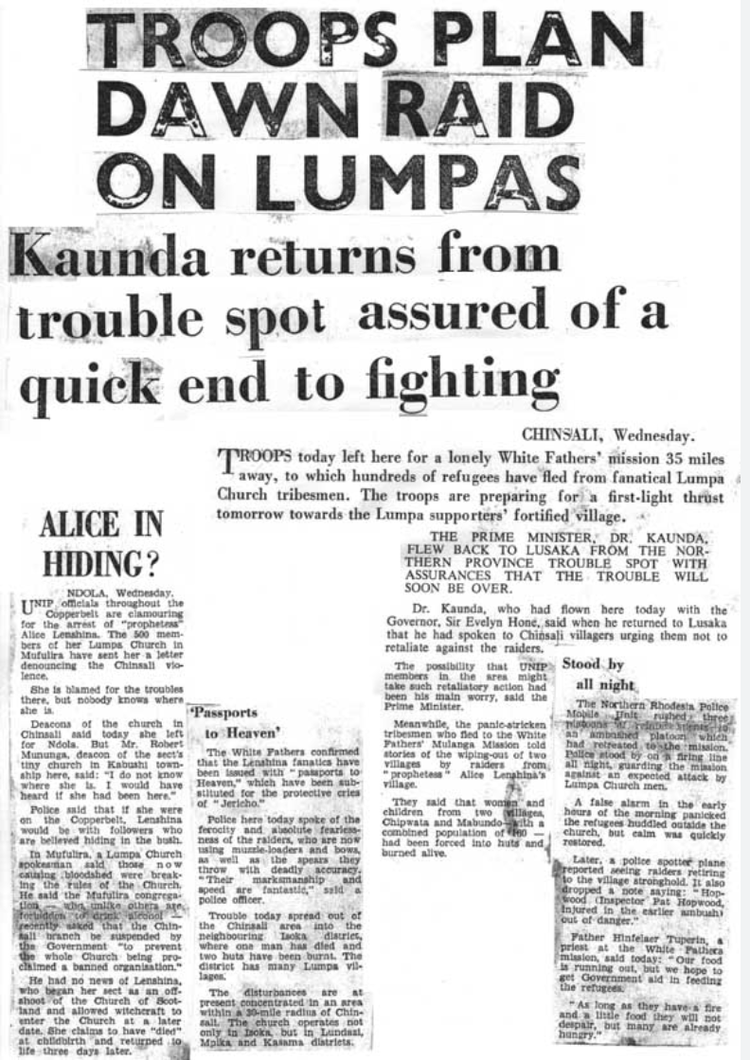
The Lumpa Uprising: A Turning Point in Zambian History
In July 1964, just months after Zambia gained independence, the tensions between the Lumpa Church and the government of President Kenneth Kaunda erupted into violence, known as the Lumpa Uprising. Lumpa members, armed and determined to defend their religious autonomy, clashed with government forces. The conflict resulted in significant loss of life, with estimates of those killed ranging from several hundred to over a thousand. The government declared a state of emergency and banned the Lumpa Church. Lenshina was arrested, and many of her followers were detained or fled to neighbouring countries, mainly the Democratic Republic of Congo (DRC). Zambian musician Mumba Yachi is said to be a descendant of migrants who fled to DRC. After years of making waves in the Zambian music scene, it was discovered that Mumba Yachi was born in Congo and did not possess valid Zambian papers. However, he had family ties to Zambia. The musician was deported in 2017 but has since returned to Zambia and continues to make the country his base.
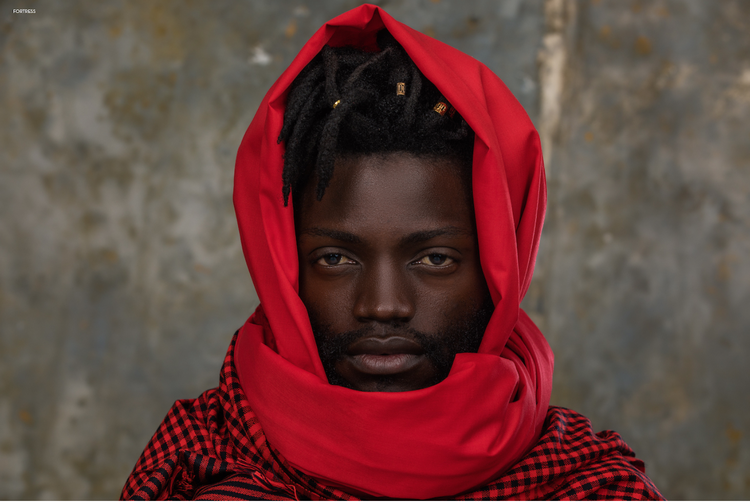
Legacy of Alice Lenshina and the Lumpa Church
Following the uprising, Alice Lenshina was detained by the government and spent many years in detention and house arrest. She never faced a formal trial but was held until her release in 1975, only to be placed under house arrest again until she died in 1978.
Alice Lenshina's legacy is multifaceted. She remains a prophetic figure to her followers who challenged colonial and post-colonial authorities, advocating for a purer form of Christianity and social justice. However, her movement's violent end and contentious relationship with the Kaunda government highlight the complexities of religious and political power in post-colonial Africa.
Though banned, the Lumpa Church left a lasting impact on Zambian religious practices. The church still has a small number of followers, mainly spread around districts in northern Zambia. The Lumpa Uprising demonstrated the power of Indigenous religious movements to mobilise large populations and challenge established authorities. The events surrounding it also serve as a cautionary tale about the potential for conflict when religious and political movements intersect.
In contemporary Zambia, Lenshina is remembered for her spiritual leadership and the tragic consequences of her movement's confrontation with the state. Her life and the history of the Lumpa Church remain subjects of interest for scholars studying the intersections of religion, politics, and colonialism in Africa.
Alice Lenshina was a significant religious leader in Zambia whose movement clashed with colonial and post-colonial authorities, leading to the violent Lumpa Uprising in 1964. Both colonial authorities and Kaunda feared her. Her legacy remains influential in Zambian religious practices and is a complex symbol of resistance and conflict in the nation's history.
